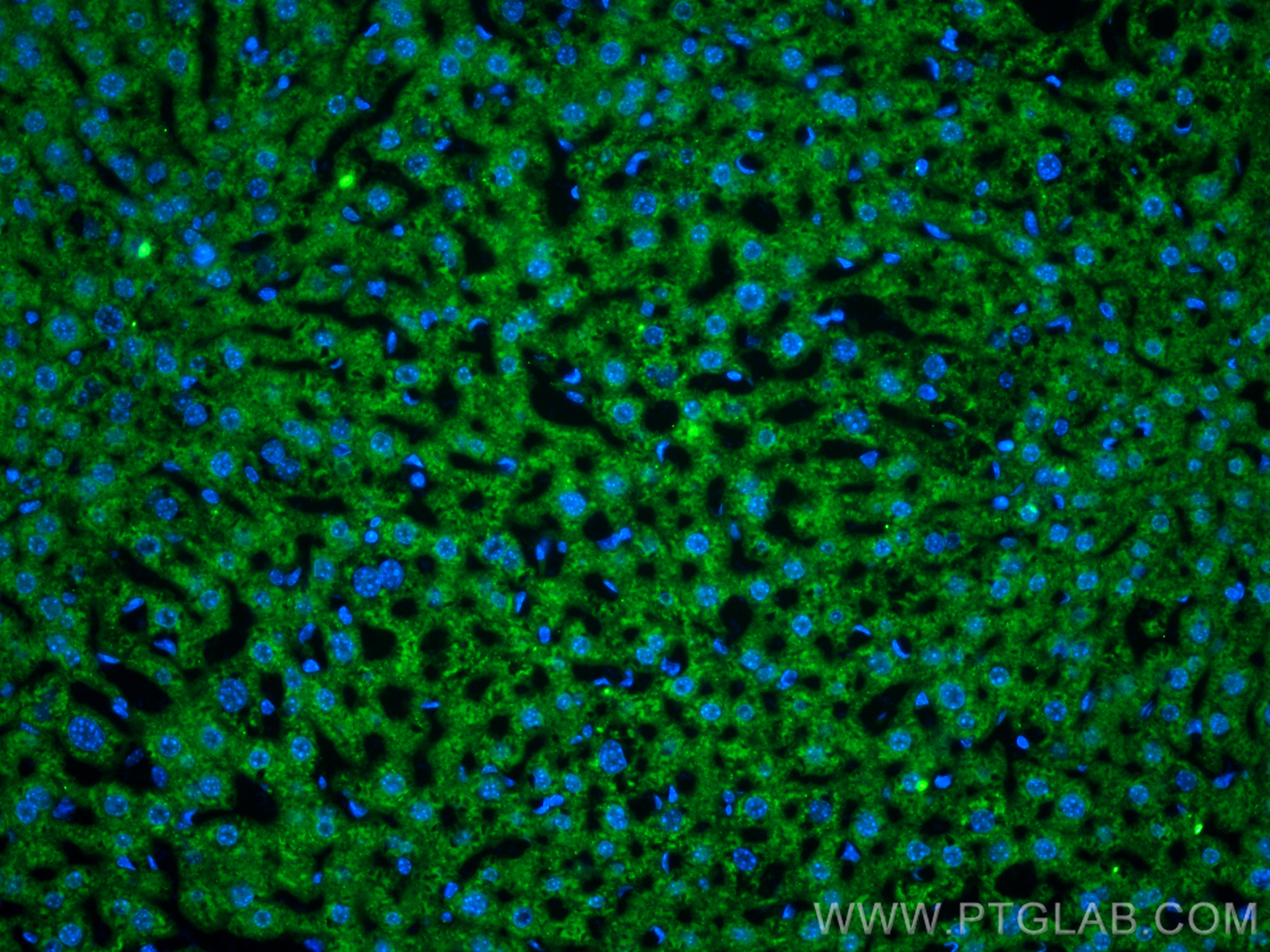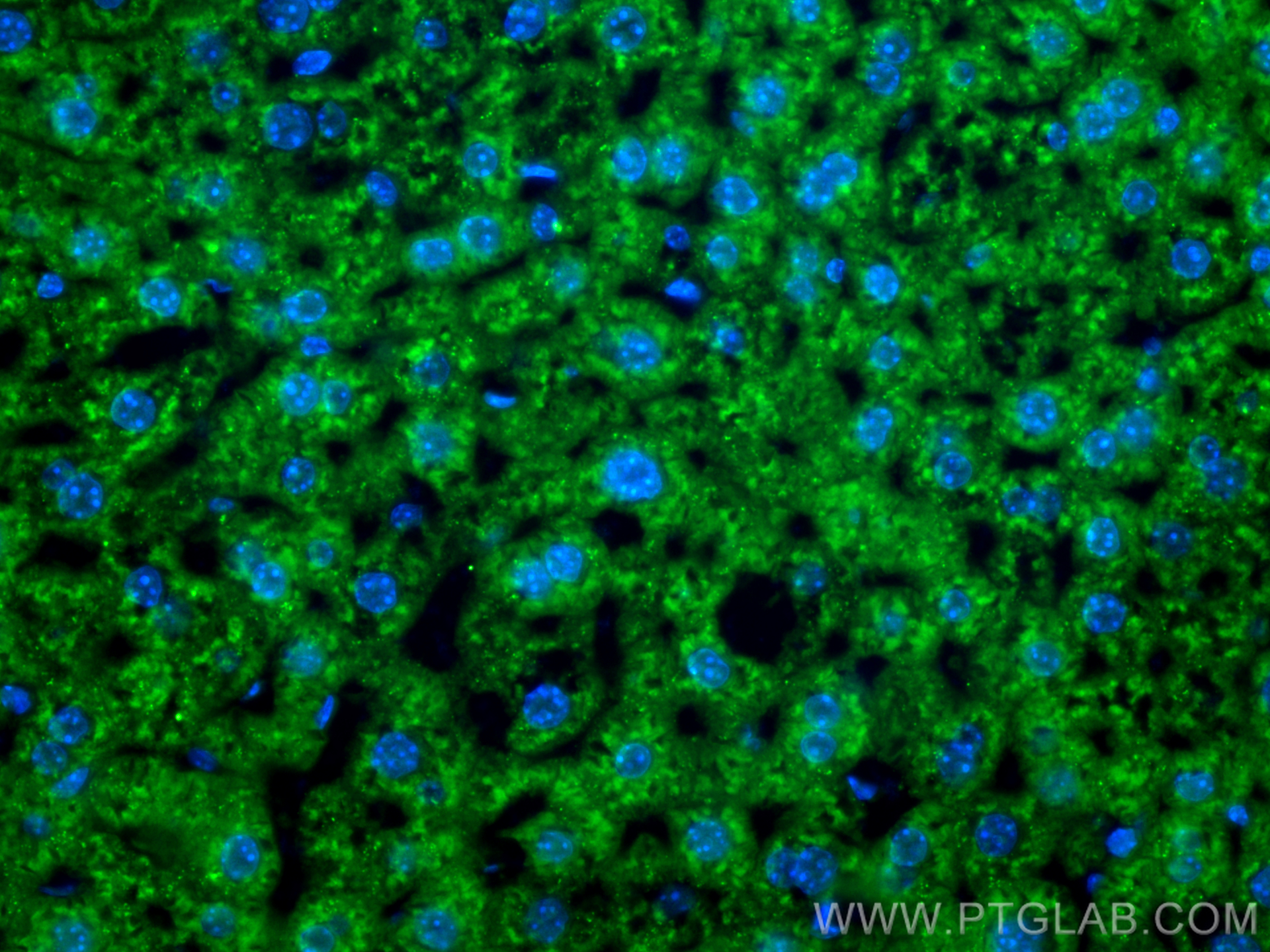验证数据展示
经过测试的应用
| Positive IF-P detected in | mouse liver tissue |
推荐稀释比
| 应用 | 推荐稀释比 |
|---|---|
| Immunofluorescence (IF)-P | IF-P : 1:50-1:500 |
| It is recommended that this reagent should be titrated in each testing system to obtain optimal results. | |
| Sample-dependent, Check data in validation data gallery. | |
产品信息
CL488-84047 targets APOB in IF-P applications and shows reactivity with human, mouse samples.
| 经测试应用 | IF-P Application Description |
| 经测试反应性 | human, mouse |
| 免疫原 |
Peptide 种属同源性预测 |
| 宿主/亚型 | Rabbit / IgG |
| 抗体类别 | Recombinant |
| 产品类型 | Antibody |
| 全称 | apolipoprotein B (including Ag(x) antigen) |
| 别名 | Apolipoprotein B, 240884H4, Apo B, Apo B-100, ApoB100 |
| 计算分子量 | 516 kDa |
| 观测分子量 | 150-250 kDa, 400-520 kDa |
| GenBank蛋白编号 | NM_000384 |
| 基因名称 | APOB |
| Gene ID (NCBI) | 338 |
| RRID | AB_3673333 |
| 偶联类型 | CoraLite® Plus 488 Fluorescent Dye |
| 最大激发/发射波长 | 493 nm / 522 nm |
| 形式 | Liquid |
| 纯化方式 | Protein A purification |
| UNIPROT ID | P04114 |
| 储存缓冲液 | PBS with 50% glycerol, 0.05% Proclin300, 0.5% BSA, pH 7.3. |
| 储存条件 | Store at -20°C. Avoid exposure to light. Stable for one year after shipment. Aliquoting is unnecessary for -20oC storage. |
背景介绍
The apolipoprotein B (APOB) is a plasma protein synthesized primarily in the liver and intestine and play an important role in lipid and cholesterol metabolism. The APOB encodes two different isoproteins through mRNA editing, APOB-48 and APOB-100. APOB-48 and APOB-100 is present in both human liver and intestine. APOB-100 is essential for the assembly of VLDL in the liver. APOB-48 is essential for the assembly of chylomicrons in the intestine. It is well established that APOB-100 levels are associated with coronary heart disease. This antibody recognizes both of APOB-48, APOB-100 (PMID:11839763, PMID:2450346).
实验方案
| Product Specific Protocols | |
|---|---|
| IF protocol for CL Plus 488 APOB antibody CL488-84047 | Download protocol |
| Standard Protocols | |
|---|---|
| Click here to view our Standard Protocols |



